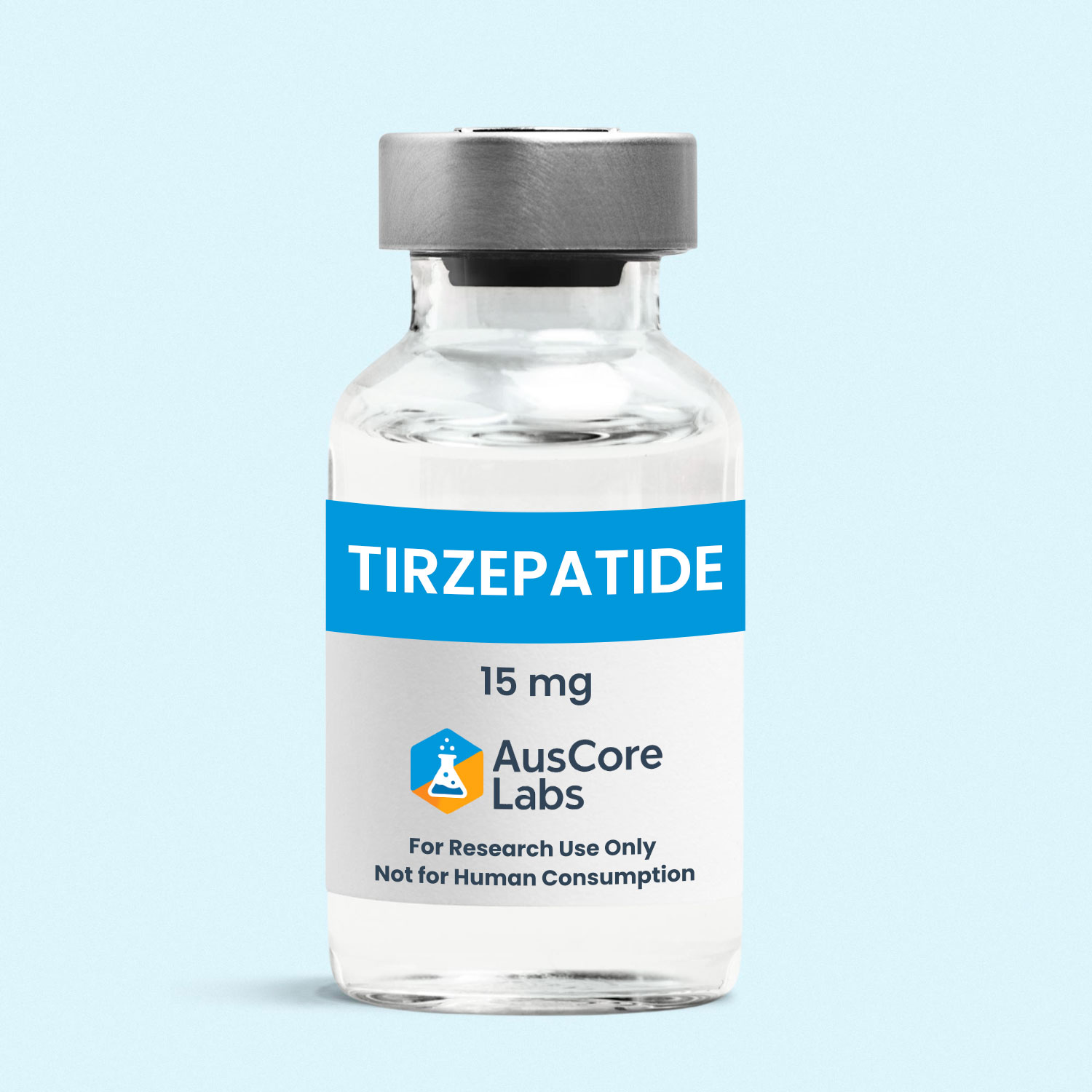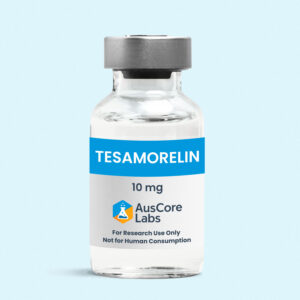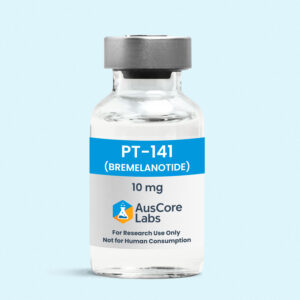Tirzepatide (15mg)
Tirzepatide (15mg)
$150.00
For Research Use Only – Not for Human Consumption
-
Quantity: 5mg per vial
-
Purity: ≥99%
-
Form: Lyophilized powder
-
CAS Number: [Insert if available]
-
Storage: Store at -20°C for long-term stability
Tirzepatide is a novel dual glucose-dependent insulinotropic polypeptide (GIP) and glucagon-like peptide-1 (GLP-1) receptor agonist that has rapidly gained attention for its impressive metabolic-modulating effects. Originally developed to support research into treatments for type 2 diabetes and obesity, this compound offers an exciting profile of biological activity across multiple systems. Its combined GIP and GLP-1 agonism makes it unique among peptide analogues, with emerging research suggesting powerful effects on glucose regulation, appetite suppression, and body weight management.
How Tirzepatide Works (Mechanism of Action):
Tirzepatide functions as a dual agonist that targets both the GIP and GLP-1 receptors, mimicking the action of two important incretin hormones. Incretins are responsible for regulating insulin release in response to food intake, thus playing a critical role in glucose metabolism.
• GLP-1: Stimulates insulin secretion, reduces glucagon secretion, slows gastric emptying, and promotes satiety in the brain.
• GIP: Enhances insulin secretion in a glucose-dependent manner and may support fat metabolism in adipose tissue.
By combining both actions, Tirzepatide offers broader metabolic benefits than GLP-1 agonists alone. In studies, this dual activation leads to improved glycemic control, increased insulin sensitivity, reduced body weight, and suppressed appetite.
Potential Benefits (Theoretical):
All benefits listed are based on early-stage animal or clinical data and are not intended as medical claims. This compound is not approved for human use.
1. Appetite Suppression and Weight Loss:
Tirzepatide has shown significant potential for reducing appetite and promoting satiety. Research participants taking Tirzepatide experienced substantial reductions in caloric intake, often without conscious dietary changes. This appetite suppression, combined with slowed gastric emptying, can lead to significant body weight reduction over time.
2. Improved Blood Sugar Control:
Studies have demonstrated dramatic reductions in HbA1c (a marker for long-term blood glucose control) in diabetic patients using Tirzepatide. These effects are due to its potent stimulation of insulin secretion and suppression of glucagon, leading to more stable postprandial blood glucose levels.
3. Enhanced Insulin Sensitivity:
Tirzepatide may help reduce insulin resistance — a key driver of obesity and metabolic syndrome — by improving glucose uptake in muscle and fat tissues. Some data also suggest it can help decrease hepatic glucose production.
4. Cardiovascular Benefits:
Incretin-based therapies have been associated with reduced cardiovascular risk, particularly in people with type 2 diabetes. Tirzepatide’s effects on blood pressure, cholesterol, and inflammation markers suggest it may have cardioprotective properties.
5. Fat Loss vs. Lean Mass Preservation:
Unlike traditional weight loss methods that often lead to muscle wasting, Tirzepatide may preferentially promote fat loss while preserving lean muscle mass. This could be of interest to researchers studying body recomposition or sarcopenic obesity.
Research and Clinical Evidence:
• SURPASS Trials: In multiple phase 3 SURPASS studies, Tirzepatide outperformed both semaglutide and insulin in reducing HbA1c and body weight. Participants lost up to 22.5% of their body weight over 72 weeks – a record in pharmaceutical weight loss studies.
• Randomized Trials: Controlled trials published in The New England Journal of Medicine have confirmed its superior glycemic and weight-loss effects, even in patients who previously failed to respond to GLP-1 agonists alone.
• Preclinical Research: Animal models have shown dramatic reductions in food intake, fat accumulation, and blood glucose with Tirzepatide administration — often exceeding those seen with GLP-1-only agents.
Dosing Information (For Research Use Only):
In research settings, Tirzepatide is typically dosed once weekly due to its long half-life (~5 days). Starting doses are often low (e.g., 2.5mg/week) and titrated upward to 10mg or 15mg per week depending on tolerance and research design. Maximum dosing in trials has reached 15mg/week.
• Note: Always store at 2–8°C. Reconstitute with bacteriostatic water if provided as lyophilized powder.
Theoretical Side Effects (From Research Context):
Based on human and animal studies:
• Nausea or gastrointestinal discomfort (common, dose-dependent)
• Injection site irritation
• Mild hypoglycemia (particularly when combined with insulin or sulfonylureas)
• Fatigue, dizziness, or headache in some cases
Most side effects appear to diminish over time with continued exposure or reduced dosing.
Legal and Safety Disclaimer:
Tirzepatide is sold strictly for laboratory research purposes. It is not approved by the TGA, FDA, or any regulatory body for human use, therapeutic treatment, or diagnostic procedures. It must not be used on humans or animals.
All products must be handled only by qualified professionals trained in peptide research. Buyer assumes full responsibility for any use that violates this policy.




Reviews
There are no reviews yet.